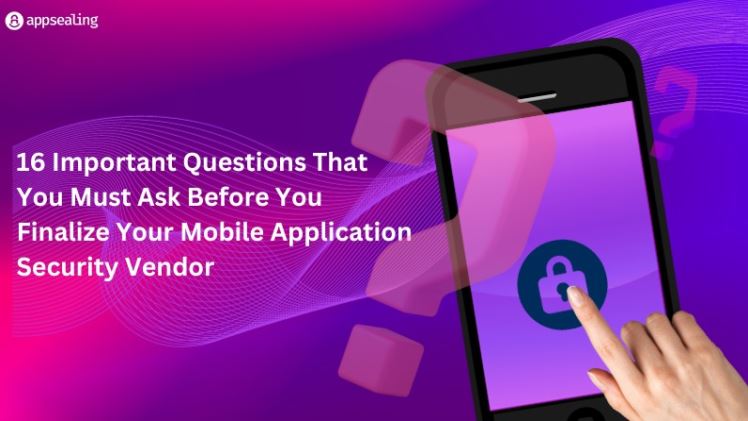AppSealing: Protecting Your Mobile Apps in a Digital World

In today’s digital age, mobile apps have become an integral part of our daily lives. From communication to entertainment, shopping to productivity, there’s an app for almost everything. However, the widespread use of mobile apps has also made them a prime target for cyberattacks. Hackers are constantly looking for vulnerabilities to exploit and steal sensitive user data or compromise the integrity of an app. To safeguard your mobile apps, one effective solution is AppSealing. In this article, we will explore the world of AppSealing and provide you with valuable tips to enhance the security of your mobile applications.
Understanding AppSealing
Before diving into the tips for AppSealing, let’s get a clear understanding of what AppSealing is and how it works.
AppSealing is a comprehensive mobile app security solution designed to protect mobile applications from a wide range of threats and vulnerabilities. It is an essential tool for app developers and businesses who want to ensure the security and privacy of their users’ data. AppSealing offers various security features and services, including:
- Code Obfuscation: AppSealing uses advanced code obfuscation techniques to make it challenging for hackers to reverse-engineer your app’s code. This helps in protecting your intellectual property and preventing unauthorized access.
- Data Encryption: The solution encrypts sensitive data within your app, making it unreadable to anyone without the proper decryption key. This prevents data leaks in case of a breach.
- Anti-Tampering: AppSealing detects and prevents any attempts to tamper with your app’s code or files. It ensures that your app remains in its original, unaltered state.
- Runtime Application Self-Protection (RASP): This feature monitors your app’s runtime behavior and can take action to prevent malicious activities, such as code injection or data theft.
- Anti-Reversing: AppSealing employs anti-reversing techniques to deter hackers from analyzing and modifying your app’s code, enhancing its resistance to reverse engineering.
Tips for Effective AppSealing
Now that we have a better understanding of AppSealing, let’s explore some valuable tips for effectively implementing this mobile app security solution.
- Choose the Right AppSealing Solution: Selecting the right AppSealing solution is the foundation of mobile app security. With numerous providers available, it’s essential to consider various factors before making a decision. Compatibility with your mobile app development platform, whether it’s Android, iOS, or both, is crucial. Ensure the solution offers easy integration options that don’t necessitate extensive code changes or development efforts. Examine the security features provided and choose the ones that best align with your app’s specific security requirements. Additionally, assess the level of support and updates provided by the AppSealing provider to guarantee ongoing protection against evolving threats. Cost considerations, including licensing fees and subscription plans, should also be part of your evaluation.
- Implement Code Obfuscation: Code obfuscation is a fundamental component of AppSealing that plays a vital role in safeguarding your app’s integrity. It transforms your code into a complex and less readable form, making it challenging for hackers to reverse-engineer and compromise your app. To implement effective code obfuscation, consider employing multiple obfuscation techniques. These can include renaming variables and methods, inserting extraneous or “junk” code, and altering control flow. Customizing obfuscation settings is essential to ensure that your app remains functional after obfuscation. Continuously update your code obfuscation techniques as your app evolves, as changes in code and functionality may require adjustments to maintain security.
- Encrypt Sensitive Data: Encrypting sensitive data within your mobile app is paramount for preventing data breaches and protecting user privacy. Start by identifying the specific data within your app that requires encryption, such as user credentials, payment information, and personal details. Employ robust encryption algorithms and follow best practices for key management to ensure that the encrypted data remains secure. Equally important is the secure storage of encryption keys, keeping them inaccessible to potential attackers. Regularly auditing your data encryption implementation is essential to detect and address vulnerabilities or weaknesses that could be exploited by cybercriminals.
- Enable Anti-Tampering Measures: AppSealing’s anti-tampering features provide a critical layer of defense against unauthorized modifications or alterations to your app. To effectively implement anti-tampering measures, enable code integrity checks that can identify any unauthorized changes to your app’s code or resources. Vigilantly monitor file modifications and file system changes within your app to quickly identify potential tampering attempts. Additionally, employ checksums and digital signatures to verify the authenticity of files and data at runtime, preventing malicious alterations. Setting up tamper alerts is a proactive approach to real-time notifications, ensuring that you or your security team can respond swiftly to any detected tampering efforts.
- Leverage Runtime Application Self-Protection (RASP): Runtime Application Self-Protection (RASP) is a dynamic feature of AppSealing that actively monitors your app’s behavior during runtime and takes preemptive action to thwart malicious activities. To maximize the benefits of RASP, begin by defining security policies based on your app’s behavior, allowing you to respond effectively to policy violations. Regularly update these security policies to adapt to emerging threats and evolving attack patterns. Continuously monitor and analyze runtime events to detect anomalies and potential security breaches in real time. Implement automatic responses within your RASP configuration, such as blocking specific activities or logging suspicious events, to proactively counter security threats and maintain the integrity of your app.
- Regularly Update AppSealing: The ever-evolving landscape of cybersecurity demands that your AppSealing solution remains up to date. Stay informed about security updates and releases from your chosen AppSealing provider by subscribing to their notifications and newsletters. Before applying updates to your production app, rigorously test them in a controlled, sandbox environment to ensure they do not introduce compatibility issues or disrupt functionality. It’s also essential to have a rollback plan in place in case an update causes unexpected problems, allowing you to revert to the previous version of AppSealing until any issues are resolved.
In conclusion, the world of mobile app security is dynamic and ever-changing, but with AppSealing as your trusted guardian, you can fortify your apps against the most sophisticated of threats. By implementing the tips outlined in this article and remaining vigilant, you can provide your users with a secure and reliable mobile app experience, safeguarding their data and ensuring your app’s success in today’s digital world. Mobile app security is not a one-time effort but an ongoing commitment, and with AppSealing, you have a steadfast partner in this vital endeavor.
